Calculations on the
![]() system, to test
a
system, to test
a ![]() dopant.
dopant. ![]() potential parameters from Lewis and Catlow (1985),
consistent with all other ones.
potential parameters from Lewis and Catlow (1985),
consistent with all other ones.
The
![]() reduction energy was evaluated according to
the procedure outlined in section 2000-06-21: even if the system does
not contain zirconia, the mean field analysis remains
identical. Notation as in section 2000-08-10.
reduction energy was evaluated according to
the procedure outlined in section 2000-06-21: even if the system does
not contain zirconia, the mean field analysis remains
identical. Notation as in section 2000-08-10.

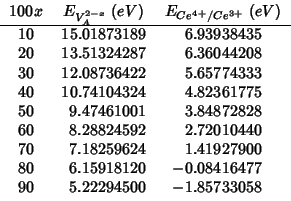
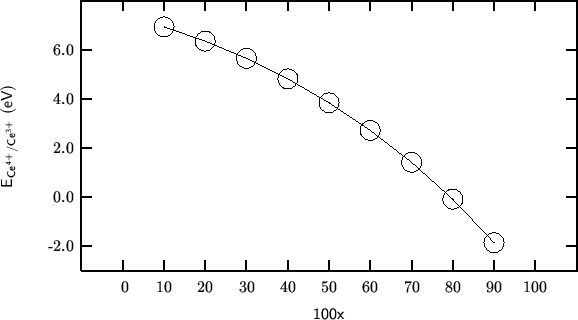
In the following figure we compare the
![]() reduction
energy as a function of the fraction of oxygen vacancies in the
structure (and NOT as a function of dopant composition) for the
different dopants. Subscripts are the effective ionic radii of the
dopants for 8-coordination, according to Shannon (1976):
reduction
energy as a function of the fraction of oxygen vacancies in the
structure (and NOT as a function of dopant composition) for the
different dopants. Subscripts are the effective ionic radii of the
dopants for 8-coordination, according to Shannon (1976):

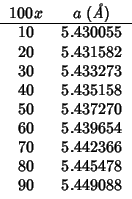
No comparison with Kim's empirical equation (Kim, 1989), as we have already seen that the accord does not seem to be bery good in the other cases.
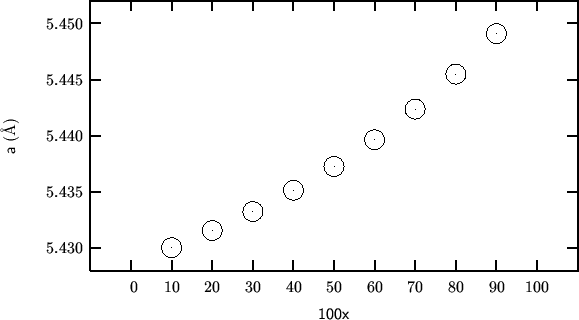
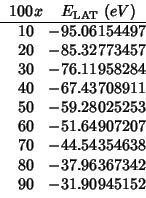
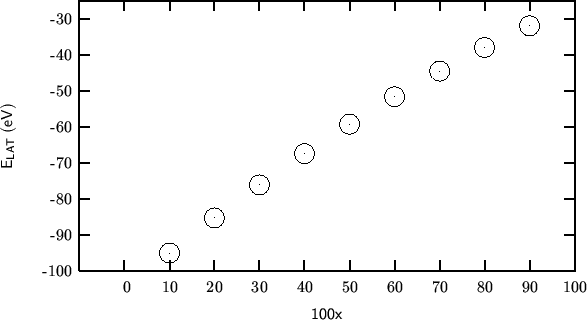
opti conp defect
maxcyc opt 200
maxcyc fit 200
dump every 1 oimp-20.dump
title
O impurity
end
cell
5.329267 5.329267 5.329267 90.000000 90.000000 90.000000
fractional 5
Ce4 core 0.0000 0.0000 0.0000 -3.7000 0.8000 0.0000
Ca core 0.0000 0.0000 0.0000 2.0000 0.2000 0.0000
O core 0.2500 0.2500 0.2500 0.0770 0.9000 0.0000
Ce4 shel 0.0000 0.0000 0.0000 7.7000 0.8000 0.0000
O shel 0.2500 0.2500 0.2500 -2.0770 0.9000 0.0000
space
225
size 10.38912042 21.81715289
centre 0.25 0.25 0.25
impurity O 0.25 0.25 0.25
species 2
Ce3 core -4.700000
Ce3 shel 7.700000
buck
Ce4 shel O shel 1986.8300 0.351070 20.400 0.000 15.000
Ca core O shel 1227.7 0.33720 0.000 0.0 15.0
Ce3 shel O shel 1731.6181 0.363720 14.433 0.000 15.000
O shel O shel 22764.300 0.149000 27.890 0.000 15.000
spring
Ce4 291.75000
Ce3 291.75000
O 27.290000